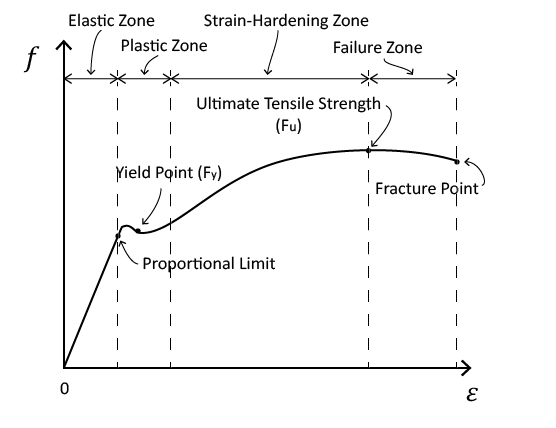| Home | Module 1 | Module 2 | Tutorials | Credits | Contact Us |
<<Back to the Previous Page <<Fundamentals <<Knowledgebase Fundamentals |
||
Stress-strain Relationship To measure the mechanical properties of any material, we find the relationship between the stress and strain by conducting a test. We use a specimen (sample) of the material and pull or push it until it fails (crushes or splits into two pieces). During this test we measure the applied force and the corresponding change in the length of the specimen. Knowing the length and cross-sectional area, we can then find the stress and strain at each step of the test. Plotting the values of stress versus the corresponding values of strain results in the “stress-strain diagram”. The figure below shows the typical stress-strain diagram for carbon steel in tension:
There are four distinctive regions in the diagram shown. The first zone is called “elastic zone”. Within this zone, if the load is released, the member goes back to its original length. It is also said that the specimen has “elastic behavior”. When the specimen is stretched beyond the elastic limit, it yields. This means that at its mid-length it becomes fluid or plastic, and it enters the “plastic zone”. The stress at which steel yields is called the "yield stress". Within the plastic zone large changes in length are obtained by only small increases in the strain. If the sample is released, it will not go back to its original length and it will sustain a permanent deformation. The specimen becomes harder to pull when it enters the “strain-hardening zone”, where the largest strength (or stress) called “ultimate tension tensile stress (
Note that the shape of the stress-strain diagram and the values of
|
© 2011 Virginia Polytechnic Institute and State University


